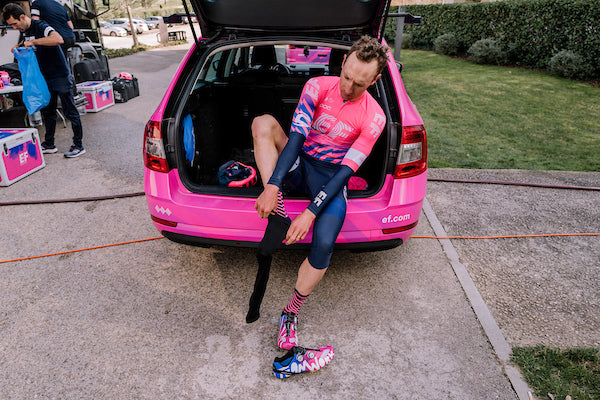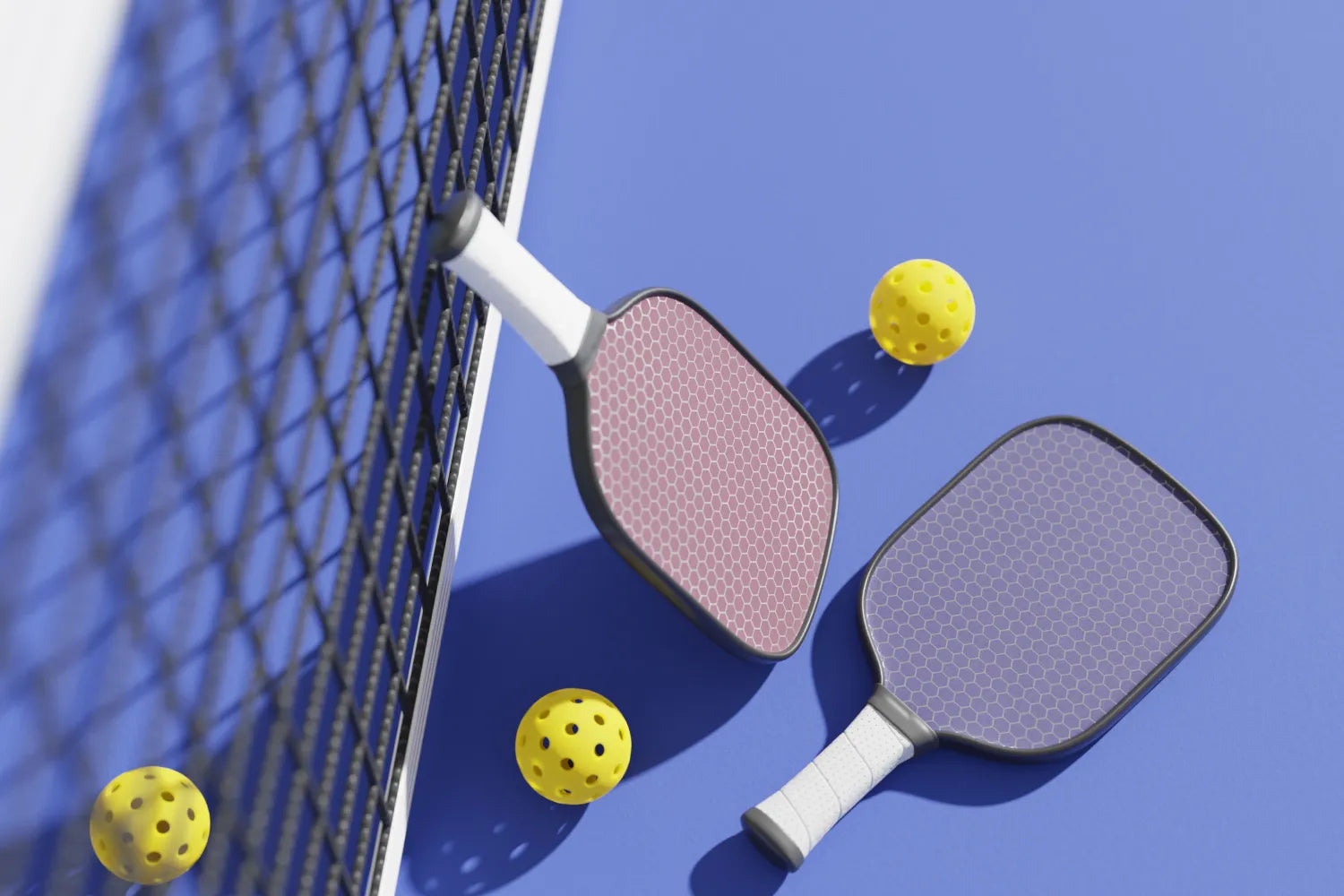As pickleball has gained popularity in recent years, many people have wondered about the differences between pickleball and tennis. Although they are both racquet sports, understanding the nuances is crucial.
In this comprehensive guide, we dive into the worlds of pickleball and tennis, providing insights to help you navigate the differences, benefits, and unique characteristics of each sport. Whether you're a seasoned player or a newcomer exploring the court, this guide aims to offer a clear understanding of what sets pickleball and tennis apart.
What Are the Origins and History of Pickleball and Tennis?
Pickleball, a relative newcomer on the scene, traces its origins to 1965 when Joel Pritchard, Bill Bell, and Barney McCallum invented the game in Washington. Initially played on a badminton court, it evolved into a sport with its own identity, combining elements of tennis, ping pong, and badminton.
In contrast, tennis boasts a rich history dating back centuries. Originating in France during the 12th century, tennis evolved from a game played with the palm of the hand to one with rackets in the 16th century. It became immensely popular among European royalty and aristocracy, eventually spreading globally.
Both sports have a distinct history, with pickleball being a product of innovation in the mid-20th century and tennis boasting a centuries-old legacy. Understanding their roots provides a valuable context for appreciating the diverse characteristics that define these two engaging racquet sports.
What Are the Court and Equipment Differences Between Pickleball and Tennis?
The distinctions between pickleball and tennis extend beyond gameplay to the very surfaces upon which they unfold and the equipment used to play each game.
Pickleball Courts
Typically one-third the size of a tennis court, a pickleball court measures 20 by 44 feet. It can be played both indoors and outdoors.
The surface can vary, with indoor courts commonly made of wood or synthetic materials, while outdoor courts are often constructed with asphalt or concrete. The pickleball net is set at 34 inches at the center.
Tennis Courts
Tennis courts, on the other hand, have different standardized dimensions. A singles court measures 27 by 78 feet, while a doubles court expands to 36 by 78 feet.
Tennis is primarily an outdoor sport, with court surfaces ranging from clay and grass to hardcourt. The net height is set at 36 inches at the center.
Racquets
The design of the racquets also differs. Pickleball racquets are solid and slightly larger, resembling oversized ping pong paddles. Tennis racquets are more elongated, featuring a net of strings stretched across an open frame.
Balls
The balls used in each sport contribute to gameplay variance. Pickleballs are plastic with strategically placed holes designed for slower play. Tennis balls are larger, covered in felt, and are significantly faster.
Understanding these court and equipment distinctions is fundamental for players considering either sport. Whether you're drawn to the compact, dynamic nature of pickleball or the expansive, strategic elements of tennis, these differences play a pivotal role in shaping the unique experiences each sport offers.
What Are the Gameplay Dynamics of Pickleball and Tennis?
The heartbeat of any sport lies in its gameplay dynamics, and pickleball and tennis showcase individual characteristics that cater to varied preferences.
Pickleball
Known for its fast-paced and engaging nature, pickleball features a smaller court and a slower ball, fostering quick exchanges and reflex-driven play. It combines elements of tennis, badminton, and ping pong, with serves initiated underhand and a two-bounce rule ensuring rallies stay dynamic.
The kitchen, a non-volley zone near the net, adds a strategic layer, demanding players master precise placement.
Tennis
Tennis, by contrast, unfolds on a larger court with faster ball speeds. The serve is overhand, and players have the freedom to move across the entire court.
The scoring system includes the deuce and advantage, adding complexity and strategic depth. The absence of a non-volley zone allows for more court coverage, and matches can vary in length, contributing to the sport's endurance-demanding nature.
What Are the Physical Demands and Fitness Benefits of Pickleball and Tennis?
The physical demands and fitness benefits of pickleball and tennis contribute significantly to the allure of both sports.
Pickleball
The smaller court and slower-paced gameplay make pickleball accessible to players of various fitness levels. It emphasizes agility, quick reflexes, and lateral movements.
While less demanding on endurance compared to tennis, pickleball offers an excellent cardiovascular workout, promoting improved coordination and balance.
Tennis
With its larger court and faster ball speeds, tennis places a premium on endurance, requiring players to cover more ground. The sport enhances cardiovascular fitness, builds leg strength through lateral movements, and improves overall agility. The dynamic nature of tennis rallies engages different muscle groups, contributing to a well-rounded physical workout.
Whether you prefer the rapid exchanges of pickleball or the immense court coverage in tennis, both sports offer engaging gameplay dynamics and physical benefits suitable for a range of fitness levels.
What Are the Target Demographics of Pickleball and Tennis?
Pickleball and tennis cater to diverse demographics. Pickleball, often attracting a wide range of ages, is popular among seniors due to its lower physical impact.
With its versatile nature, tennis appeals to all age groups, from young enthusiasts to seasoned players, fostering a broad and inclusive community of players.
What Are the Injury Risks and Prevention
Both pickleball and tennis entail injury risks, often related to repetitive arm movements. Tennis players may face issues like tennis elbow. Incorporating proper warm-ups, cooldowns, and strength exercises can mitigate risks.
Regular use of such supportive gear aligns with a holistic approach to minimizing injury risks associated with these dynamic racquet sports.
Wrapping Up
In the world of racquet sports, the choice between pickleball and tennis lies in the preferences, fitness goals, and dynamic gameplay each sport offers. Pickleball's accessibility and engaging exchanges make it a hit across generations, while tennis' strategic depth and court coverage cater to a broad demographic.
Understanding the court differences, equipment nuances, and gameplay dynamics is essential for players looking to dive into these sports. Whether you seek the agility of pickleball or the endurance challenge of tennis, both offer a pathway to fitness and fun.
As you begin your racquet spot journey, remember that the joy lies not just in the sport you choose but in the camaraderie, fitness benefits, and sheer enjoyment of being on the court, where you’ll savor each swing and rally.
Links:
Pickleball: Fastest Growing Sport – Especially for Seniors | MUSC Health
Health benefits of tennis | NIH
Long-term Tennis Participation and Health Outcomes: An Investigation of “Lifetime” Activities | NIH
Lateral Epicondylitis (Tennis Elbow) | Johns Hopkins Medicine.
Read more

When you’re injured, recovery must instantly become your main priority. Incrediwear has your back (and your arms, legs, shoulders and hips!). Incrediwear’s recovery sleeves and braces can be worn 2...

When you’re injured, recovery must instantly become your main priority. Incrediwear has your back (and your arms, legs, shoulders and hips!). Incrediwear’s recovery sleeves and braces can be worn 2...






Leave a comment
All comments are moderated before being published.
This site is protected by hCaptcha and the hCaptcha Privacy Policy and Terms of Service apply.